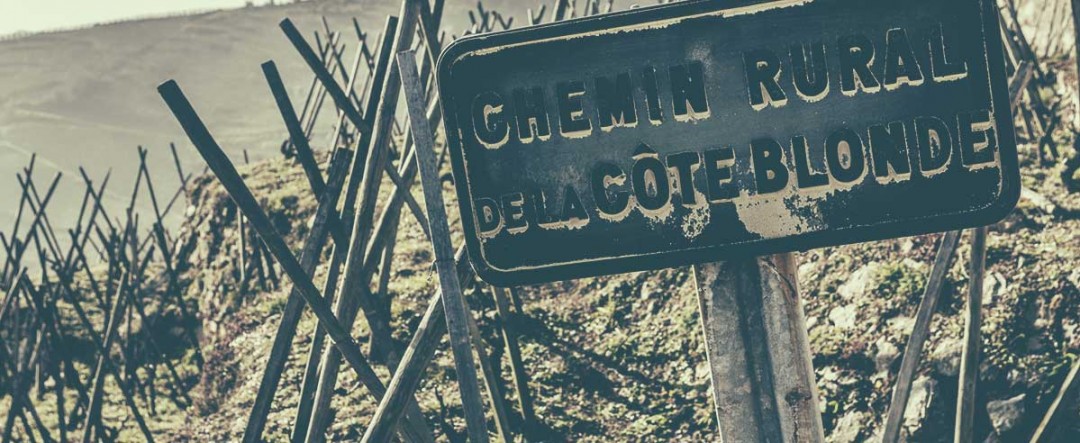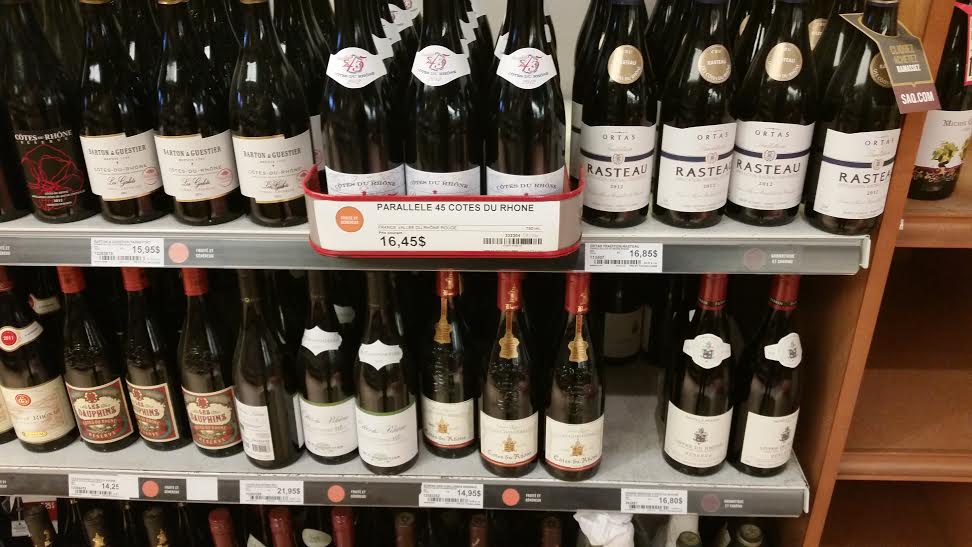In 2007, to the horror of my Burgundian winemaking buddies, I left Beaune and moved to the Rhône Valley. They couldn’t believe that I would forsake noble Pinot Noir for brash, in-your-face Grenache and Syrah.
I went down south for the weather to work for an amazing company, Gabriel Meffre, that makes not only lush Grenache-led southern Rhône wines but also elegant, powerful northern Rhône Syrah. The move was a fortuitous one as it was there that I met my husband, an oenologist with an unabiding love for Syrah. Together we travelled throughout the northern and southern Rhône tasting Syrah on its own or in blends. And I began to understand his enthusiasm.
Syrah is an intriguiging grape. In the northern Rhône it is peppery, with violet and cassis notes and a dry, almost austere character. In warmer climates, it transforms into a lush, almost hedonistic wine with sweet black fruit, chocolate and spiced notes. Either way, Syrah is bold. It is not a subtle, wallflower of a grape. It is an attention grabber. Perhaps not the wine you want with salmon on a hot summer night, but as we shuffle (reluctantly) into icy winter Syrah is a great choice. Especially when you consider the 14% + alcohol on many of the hot climate “Shiraz” labelled versions.
Syrah is bold. It is not a subtle, wallflower of a grape. It is an attention grabber.
If you can overlook the grey, chilly weather, the northern Rhône is an incredible vineyard to visit. In Côte Rôtie, vines are planted on slopes so steep they make you dizzy just looking at them. Côte Rôtie is about as far north as the Syrah grape can grow. It only thrives here because the best slopes are oriented south-east, hence the name which means “roasted slope”. This mix between cool climate and intense summer sunshine gives incredible complexity to the wines. They are both elegant and powerful; with pretty floral aromas and big, meaty flavours. Further south, the vineyards of Hermitage and Cornas also make top class Syrah, but that is a blog for another day. Hugging the famous hill of Hermitage and spanning outwards north, east and south, is the largest vineyard of the northern Rhône: Crozes-Hermitage. Wines from the northern part of the appellation, grown on granite, make richer, more complex wines while wines from the flatter, clay-dominant valley floor sites in the south tend to be simpler. Broadly speaking, Crozes-Hermitage is characterized by bright, red fruit, spice and earthy, herbacious notes. It is lively on the palate, with tart fruit; softer and less structured than the more illustrious villages, but generally offering good value.
While Syrah has a long and storied history in the northern Rhône, it is a pretty recent grape for Chile. Most plantings date only as far back as the 1990s. Despite this, Chilean Syrah has gained the attention of critics world-wide for its high quality and diversity of styles. Chile’s vineyards stretch almost 1300km from the hot, dry north to the cool, wet south, hemmed in by the Pacific Ocean to the west, and the Andes Mountains to the east. Cooling ocean currents and high altitude plantings give bright acidity that lifts the rich, fruit-driven flavours. If you’ve read my blog posting “The Death of Joy” you’ll know that I am not fond of comparisons, but if pressed I’d say that the up-and-coming cooler climates of Elqui and Limari give a slightly more tart, Old World style (with fuller, riper fruit) and more southerly regions like Colchagua and Maipo give more powerful, lush New World type examples with firm, but rounder tannins and higher intensity of sweet fruit.
The alternate name for Syrah, Shiraz, immediately brings Australia to mind. When I first started buying my own wine (rather than swiping bottles from my dad’s cellar), big, jammy, oaky Australian Shiraz was everywhere. Often bearing labels with cuddly koalas, or hopping kangaroos or some other such furry creature. Just like all fads, the wine world seems to have done a total 360°and now detests these wines, sadly causing Australian wine sales to plummet in many countries. This is unfortunate, as more balanced, nuanced Shiraz abound from excellent producers, with great examples as reasonably priced as 15$ – 20$. South Australia is prime Shiraz territory. The Barossa Valley produces big, bold wines, with dark chocolate and black fruit aromas. The coastal McLaren Vale region gives more mellow, velvetty Shiraz with red fruit, spice and peppery notes. The better wines from both regions have fresh acidity, poise and firm, but ripe tannins.
For the purposes of this initial overview tasting, I chose examples from the following producers: (What do VW, PW and LW mean? Click on my wine scoring system to find out).
Laurent Combier “Cap Nord” Crozes-Hermitage 2011 – 90pts. PW
The “Cap Nord” cuvée from excellent producer Laurent Combier showcases vineyard parcels from the Northern Crozes-Hermitage villages of Gervans and Serves. Restrained aromas of tart red fruits, pepper and smoky notes. The palate is vibrant; medium bodied with a smooth tannic structure and subtly savoury notes through the medium length finish.
Where to Buy: This cuvée is not available, but the classic 2014 Laurent Combier Crozes-Hermitage sells at the SAQ (27.15$)
Viñya Chocalan “Reserva” Maipo Valley Syrah 2013 – 86pts. VW
Chocalan is the local name for the yellow flower that grow wild in the Maipo Valley. Heady aromas of sweet spice, cassis liqueur, licorice and violets. The acidity, while fresh, doesn’t quite counter-balance the big, creamy core, high levels of toasty, vanilla scented oak and hot, 14.5% alcohol.
Where to Buy: LCBO (15.95$), SAQ (20.30$)
Yalumba “Patchwork” Barossa Shiraz 2011 – 88pts. PW
Yalumba makes consistently high quality wines at all price points. The “Patchwork” cuvée from Barossa is full-bodied with a firm structure and big, chunky tannins. The nose offers an interesting mix of animal notes, dark chocolate, black fruits and menthol. Overly prominent oak and a touch of astringency knock this otherwise well-made wine down a peg for me.
Where to Buy: LCBO (23.95$)
D’Arenberg “The Footbolt” McLaren Vale Shiraz 2012 – 89pts. PW
D’Arenberg is a go-to producer for fun, gluggable wines from the McLaren Vale. “The Footbolt” features a pretty, perfumed nose with sweet blueberry and cherry notes, violets, mixed spice and cedar. Lively and fullbodied, with a taut structure, smooth, subtle oak and chewy tannins. Represents good value for the price.
Where to Buy: LCBO (21.95$), SAQ (21.95$)
Patrick Jasmin Côte Rôtie 2010 – 91pts. LW
Four generations of the Jasmin family have farmed this tiny, high quality 5 hectare estate. Big and brooding, with intense leather, barnyard, cassis and tobacco on the nose. Bracing acidity underscores the firmly textured, full-bodied red through the mid-palate. Well-integrated oak and firm, grippy tannins mark the finish. A linear, somewhat austere Côte Rôtie. Needs time in the cellar to unwind.
Where to Buy: Unfortunately not currently available in Ontario or Québec




